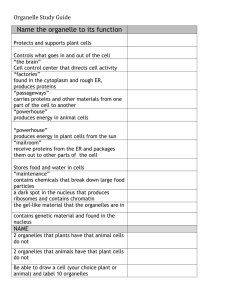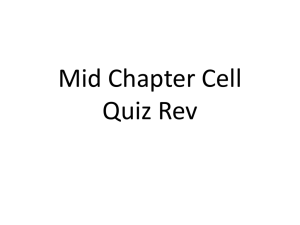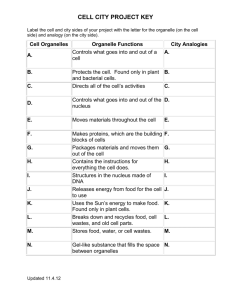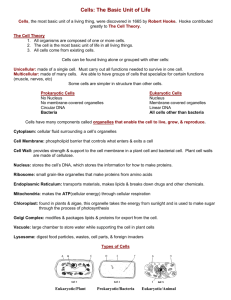The Cell
advertisement
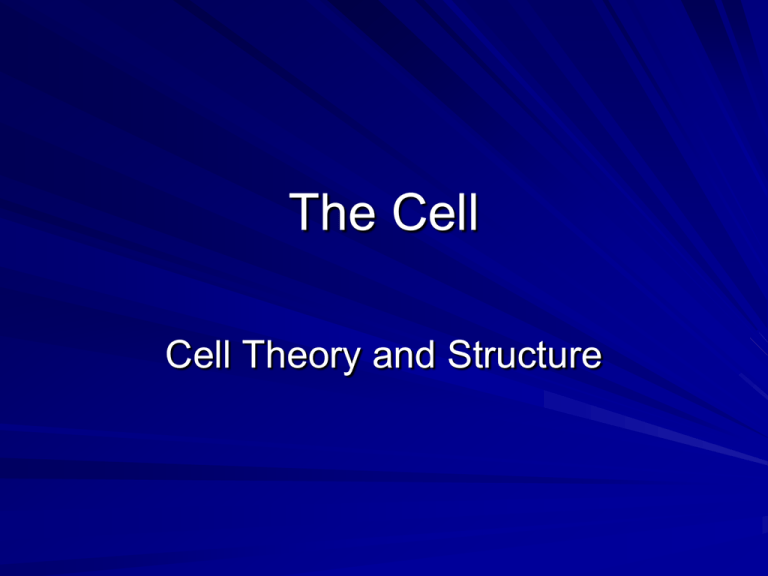
The Cell Cell Theory and Structure Scientists Contributing to The Cell Theory Anton van Leeuwenhoek– one of the first people to study nature with a microscope– he made detailed drawings of little creatures he found in pond water Cell scientists Robert HookeCoined the term “cell”. He looked at cork through the microscope and said the compartments looked like the rooms that monks lived in “cells” Cell scientists Rudolph Virchow – cells come from preexisting cells Cell Scientists Schleiden - all plants are made of cells Schwann – all animals are made of cells The Cell Theory All the scientists previously mentioned contributed to the Cell Theory which states: – All living things are composed of cells – Cells are the basic unit of structure and function in living organisms – New cells are produced from pre-existing cells Basic Cell Structures Cell membrane- thin, flexible barrier around the cell. It is semi-permeable, meaning some things are let through and others are not Cell Wall- thick outer covering found in plant, bacteria and algae cells. Not found in animal cells Cytoplasm- A mixture of salt and water that contains all the cell’s inner parts Nucleus- The control center of the cell, otherwise known as the “brain”. It controls cell activities and contains the DNA Prokaryotes and Eukaryotes Prokaryotes- simple cells with no nucleus or membrane-bound organelles. Examples are bacteria Eukaryotes- complicated cells with a control center (nucleus) and other organelles (means little organ) Animals and plants have Eukaryotic cells Images Prokaryote Eukaryote Cell Structures Cell Wall- Made from fibers such as cellulose Main function is to provide support and structure for cell Found in plants, almost all bacteria (prokaryotes), fungi and algae Not found in animals The Nucleus Discovered by Scottish botanist Robert Brown Controls most of the cell’s activities and carries their heredity Chromatin is DNA in a granular mass inside the nucleus Chromosomes form when the chromatin wraps tightly around proteins and condense Nucleolus- Small, irregular structure inside the nucleus- the first step towards making proteins happens here Nuclear Envelope- thin, flexible barrier that seperates the nucleus from the rest of the cell Cytoskeleton A network of protein filaments that provide support and movement for the cell Microtubules- hollow tubes of protein that maintain cell shape and act as “tracks” that organelles move around on Microfilaments- Long, thin fibers that function in movement and support, makes up cilia and flagella Cilia and Flagella Cytoplasmic Organelles Ribosome- Proteins are made here in the Ribosome-home Endoplasmic Reticulum- (ER)- two types, smooth and rough (studded with ribosomes). Components of the cell membrane are made here and proteins are modified Golgi Apparatus (UPS center), proteins, carbs and lipids are packaged and shipped all over the cell Cytoplasmic Organelles Lysosomes- (Clean Up Crew) Little pac-man like organelles that munch through the cell “eating” trash and dead organelles Vacuoles- (Mini-Warehouse Storage Center)stores food and water for the cell to use later Chloroplast- Makes food in plant cells “Mighty” Mitochondria- breaks down food and makes energy for the cell, has its own DNA that you get from your mother
